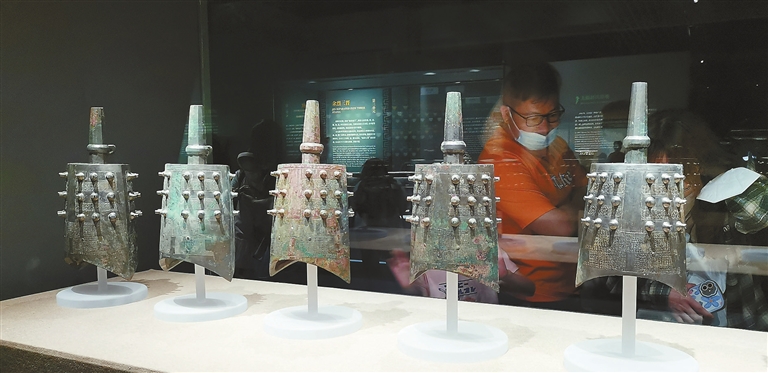
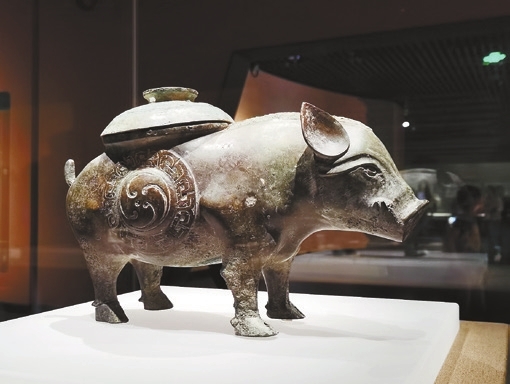
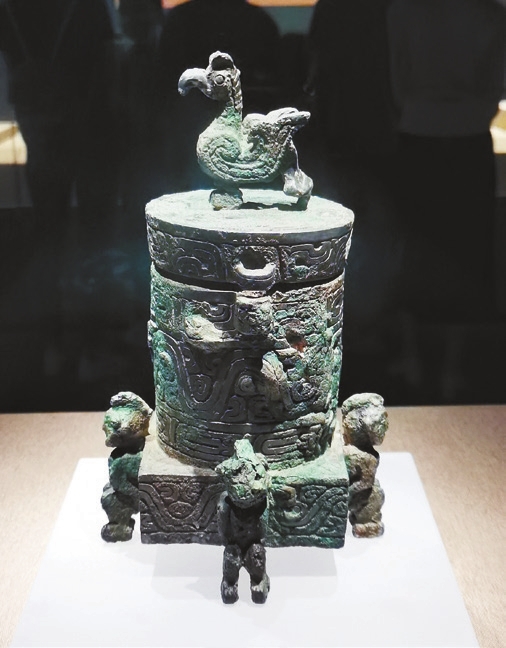
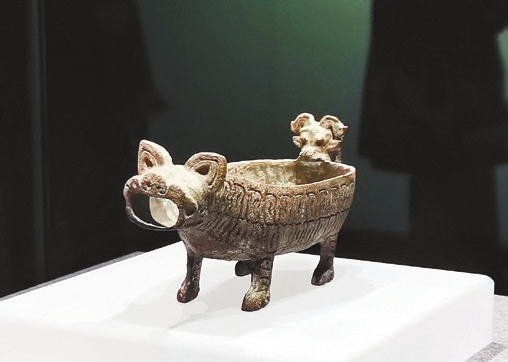
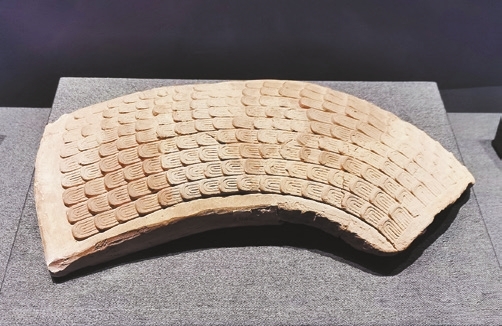
Cao Zhen caozhen0806@126.com A TOTAL of 159 relics on loan from Shanxi Museum and the Shanxi Provincial Archaeological Research Institute are on display at a free exhibition on the history of the Jin State (1033-376 B.C.) at the Nanshan Museum. As one of the five most powerful states in the Spring and Autumn Period (770-476 B.C.), the Jin State used to cover areas in modern Shanxi Province and parts of Shaanxi, Hebei, Henan, Shandong and Inner Mongolia. The exhibition leads visitors on a look back at the state’s rise and fall over 600 years from a fiefdom to a powerful state and its decline and division into the three states of Han, Zhao and Wei. It showcases representative bronze ritual items, musical instruments, chariot and horse accessories and weapons excavated in Shanxi, one of the cradles of ancient Chinese civilization in the middle reaches of the Yellow River. The exhibition is also one of the “Zhou Dynasty Vassal States Series Exhibitions” organized by the Nanshan Museum this year. When the Zhou Dynasty (1046-256 B.C.) was founded, the conquered lands were given to imperial relatives and ministers as hereditary fiefs. The second Zhou king gave a land called Tang, around modern Linfen City, Shanxi, to his younger brother Yu, who was then titled the marquis and thus called Tang Shuyu. Yu’s son and successor, Marquis Xie of Jin, later changed the land’s name from Tang to Jin. Many exhibits were excavated from important archaeological discoveries of the 20th century such as the Qu Village-Tianma Site and the Houma Jin State Site. At the Qu Village-Tianma Site in modern Quwo County, Linfen, tens of thousands of relics have been unearthed since the 1960s from the famous Cemetery of Marquises of Jin. The discovery of this site provides insights into the early Jin culture and clues for further exploration of its cultural development, and the relationships between the Jin State, Zhou Dynasty and other vassal states. The discovery also helps historians to understand the funeral system and social development during the Zhou Dynasty. The precious cultural relics such as bronze and jade artifacts have promoted research on ancient writing, metallurgy, jade craft and interregional cultural exchanges. The Houma Jin State Site in modern Houma City, Linfen, used to be the capital of the late Jin State, called Xintian, from 585 B.C. to 376 B.C. An old town, tombs, workshops of bronze casting, pottery, jade and bone crafts, and sacrificial sites were discovered in the site. Tens of thousands of pottery models unearthed from the Houma Foundry in the site reflect the advanced bronze casting techniques; the shapes of and patterns on the bronze artifacts found in the foundry cover almost all the decorative content of Jin-style bronze wares. At the exhibition, visitors will have a rare opportunity to observe some of the Houma Alliance Agreements written on jade. More than 5,000 jade slips and tablets were excavated at the Houma Jin State Site. In Jin’s late period, officials wrote alliance testimonies to seek unity. Dates: Until July 23 Booking: WeChat account “nanshanmuseum” Venue: Nanshan Museum, Nanshan District (南山博物馆) Metro: Line 1 or 12 to Taoyuan Station (桃园站), Exit B | 
